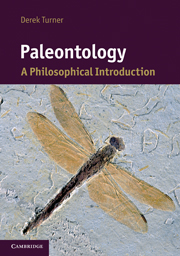Book contents
- Frontmatter
- Contents
- List of figures
- Acknowledgments
- 1 Introduction
- 2 A new way of seeing the fossil record
- 3 Punctuated equilibrium
- 4 Species and macroevolution
- 5 The case for species selection
- 6 Real trends, relative progress
- 7 Dynamics of evolutionary trends
- 8 Evolutionary contingency
- 9 Diversity, disparity, and the Burgess Shale
- 10 Molecular fossils
- Bibliography
- Index
5 - The case for species selection
Published online by Cambridge University Press: 05 June 2012
- Frontmatter
- Contents
- List of figures
- Acknowledgments
- 1 Introduction
- 2 A new way of seeing the fossil record
- 3 Punctuated equilibrium
- 4 Species and macroevolution
- 5 The case for species selection
- 6 Real trends, relative progress
- 7 Dynamics of evolutionary trends
- 8 Evolutionary contingency
- 9 Diversity, disparity, and the Burgess Shale
- 10 Molecular fossils
- Bibliography
- Index
Summary
Species selection is, as we saw in Chapter 4, one kind of species sorting (compare also Vrba and Gould 1986). Trivially, species sorting is either random (unbiased) or biased. It is just an empirical question whether species sorting is biased or unbiased in any given instance. But it's plausible to think that species sorting is at least sometimes biased. The alternative would be to say that species sorting is always random, and that the MBL model accurately represents macroevolution. Although Schopf (1979) sympathizes with that view, few paleontologists would go so far. Thus, if we define species selection as biased species sorting, it should be relatively easy to document cases of species selection in nature. This is the broadest possible conception of species selection. Some theorists, however, argue that we need a narrower conception of species selection, and that it would be a mistake simply to equate species selection with biased species sorting.
One theme of this chapter is that scientists and philosophers who are interested in species selection confront a trade-off. The more we relax our view of what is required for species selection, the easier it will be to show that species selection really occurs in nature. That means that species selectionists must feel an empirical pull toward thinking of species selection in the broadest possible terms.
- Type
- Chapter
- Information
- PaleontologyA Philosophical Introduction, pp. 77 - 98Publisher: Cambridge University PressPrint publication year: 2011



